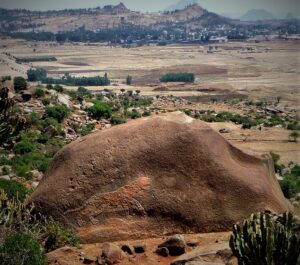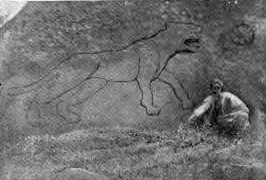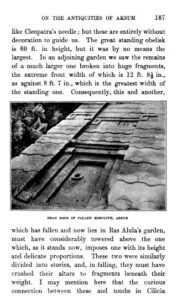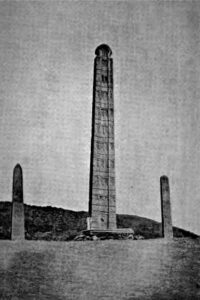
Perhaps to most readers, the Bents are associated mostly with Greece and the Eastern Mediterranean, especially the Cyclades (based on their bestseller on the region published in 1885).

But Theodore and Mabel are remembered too, by those with time to explore the explorers, for their expeditions to Southern Arabia and Persia (including their astonishing ride, south-north, the length of Iran in 1889), and Africa (a dangerous trek down the west coast of the Red Sea in 1896; and extraordinary work for Cecil Rhodes at ‘Great Zimbabwe’ in 1891).
And in 1893, Abyssinia’s Aksum enticed them too, not to mention the mythical ‘Lioness of Gobedra’.

It’s no secret that the BBC’s World Service is full of secrets – waiting for adventurers to discover: adventurers like Theodore Bent. Currently (December 2020) in its treasure of a series, ‘The Forum’, there is an episode on the enigmatic stelae of Aksum – erstwhile capital of an Abyssinian region dated to some 2000 years ago, and frantically explored by Bent and his wife in 1893. The fact that the Bents are not referenced, however, is a serious academic omission (modern archaeologists are still condescending towards them), especially since the nearby and important site of Yeha was first identified by Bent.

The episode does refer to Aksum’s ‘stele 2’, removed by Mussolini for Rome in the manner of former despots and now happily returned, but not that it was actually photographed some 50 years earlier in situ by Mabel Bent and reproduced in their most readable adventure – ‘The Sacred City of the Ethiopians’. Despite this, the programme (with contributions by Niall Finneran, Solomon Woldekiros and Felege-Selam Solomon Yirga) is a must, as is the Bents’ account, easily findable for free on-line.
For more on the Bents in Africa, see The Travel Chronicles of Mabel Bent, Vol. 2
 Leave a comment or contact us about this article
Leave a comment or contact us about this article